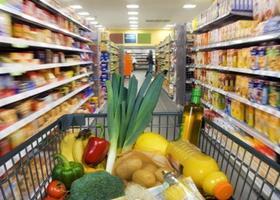
Shoppers are showing an interest in voice-activated technology to make their food and grocery purchases from home, with three in ten (28 per cent) shoppers claiming to be interested in using a voice activated device at home to add food or grocery items to their online basket in the future, according to new research from food and grocery research organisation IGD.
This ‘conversational commerce’ is just one way shoppers are looking to innovate in the way they buy their food and groceries. Today, IGD research shows the online grocery market is worth £10.4bn and in the last month, some 41 per cent of all British shoppers say they have bought some of their food and groceries online.
More convenient solutions for shoppers to order and receive their products online could also drive appeal – 19 per cent also envisage that it’s likely they may be buying their food and groceries online and getting them delivered to a secure refrigerated locker near their home in the next 2-3 years. In the same time period, nearly a quarter (24 per cent) say they see themselves signing up to an online subscription service to get grocery products they use regularly delivered to them automatically.
As shoppers look ahead to the future, IGD’s research suggests a continuing evolution in the channels and modes used by shoppers. Six in ten (60 per cent) shoppers predict they will be shopping online for some of their groceries in the next 2-3 years. IGD forecasts the online grocery channel to grow 53.8 per cent to be worth £16bn by 2022, which represents a growth in share of the total grocery market from 5.6% to 7.5% and also highlights the ongoing critical importance of physical shops.
“With the recent news that Amazon is set to purchase Whole Foods Market, we see the blend of on and offline grocery shopping moving closer to shoppers and our research highlights just how much food is at the forefront of shopper thinking when considering what technological advances might be available in future,' said Vanessa Henry, shopper insight manager at IGD.
“The more time-deprived, budget-focused and busier in general shoppers become, the more appealing the convenience of online is, so it’s no surprise that we’re anticipating growth in this area,' she continued. 'Knowing what shoppers are looking for in this channel, retailers must now look to deliver solutions online that help them browse and make purchases quickly and easily while offering value for money.”
But it isn’t just online shopping platforms that shoppers associate most with technological advancements for making food and grocery purchases. IGD’s research identified the use of technology in-store to be a key interest of shoppers, with just under half (48 per cent) saying they are interested in using touch screens in-store to find out more information about products, and 43 per cent demonstrating an interest in using their mobile to scan and pay for items without going through the till.
Shoppers also see opportunities with technology to take advantage of offers and save money. Indeed, 44 per cent of shoppers like the idea of receiving personalised offers on their phone in different parts of the store, with 42 per cent saying they would be interested in being alerted to relevant offers on their phone when they are near a store.
As online grocery shopping rises in popularity, over one in five (22 per cent) shoppers also welcome the idea of their food and groceries being delivered to them by drones or robots in the future.
“We live in an increasingly ‘on-demand’ and connected world where consumers expect a frictionless shopping experience,' noted Toby Pickard, senior innovations and trends analyst at IGD. 'We’ve identified one-click ordering and voice ordering as a global trend that is helping shoppers to achieve this.
'What appeals most to shoppers who are positive about this technology is the potential for convenience and ease, therefore the simplicity of one-click and voice ordering could be a winning formula,' he said. 'Companies utilising innovations like these can lock shoppers in to achieve loyalty, and for those looking to succeed in this area, delivery systems will need to become smarter, more flexible, efficient and responsive.”



